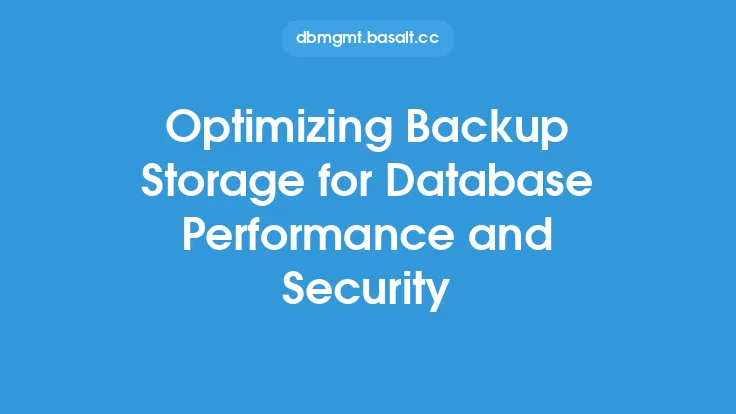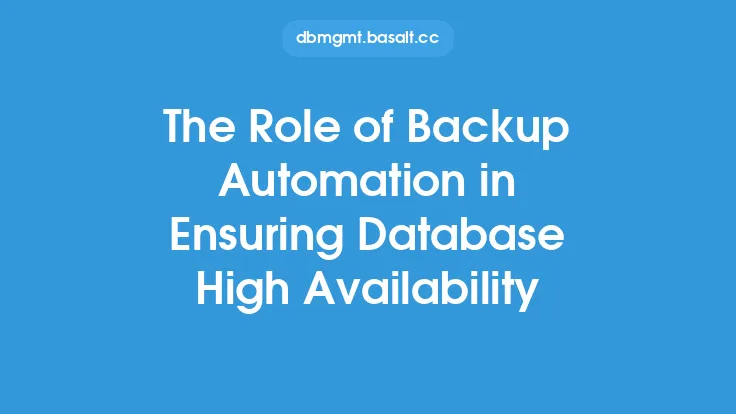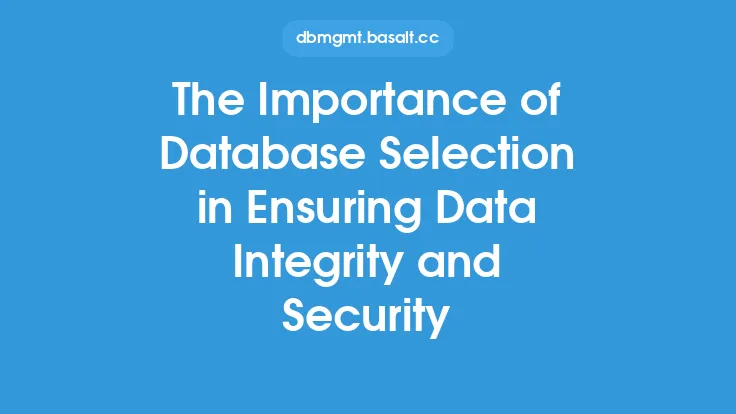Database backup and security are crucial aspects of ensuring the confidentiality, integrity, and availability of an organization's data. As the volume and complexity of data continue to grow, it is essential to implement a robust database backup and security strategy to protect against data loss, corruption, and unauthorized access. In this article, we will delve into the importance of database backup and security, and explore the various techniques and best practices for ensuring the confidentiality, integrity, and availability of database systems.
Introduction to Database Security
Database security refers to the measures taken to protect a database from unauthorized access, use, disclosure, disruption, modification, or destruction. This includes ensuring the confidentiality, integrity, and availability of the data, as well as protecting against various types of threats, such as hacking, malware, and insider attacks. A robust database security strategy should include multiple layers of defense, including access controls, encryption, auditing, and monitoring.
Database Backup and Recovery
Database backup and recovery are critical components of a database security strategy. A database backup is a copy of the data in a database, which can be used to restore the database in the event of a failure or data loss. There are several types of database backups, including full backups, incremental backups, and differential backups. Full backups involve copying all of the data in the database, while incremental backups involve copying only the data that has changed since the last backup. Differential backups involve copying all of the data that has changed since the last full backup.
Ensuring Confidentiality
Ensuring the confidentiality of database systems involves protecting the data from unauthorized access. This can be achieved through various measures, including access controls, encryption, and auditing. Access controls involve restricting access to the database to authorized personnel, using techniques such as authentication and authorization. Encryption involves converting the data into a code that can only be deciphered by authorized personnel. Auditing involves monitoring and logging all access to the database, to detect and respond to potential security threats.
Ensuring Integrity
Ensuring the integrity of database systems involves protecting the data from corruption or modification. This can be achieved through various measures, including data validation, error checking, and backup and recovery. Data validation involves checking the data for errors or inconsistencies, to ensure that it is accurate and complete. Error checking involves detecting and correcting errors in the data, to prevent data corruption. Backup and recovery involve creating copies of the data, to restore the database in the event of a failure or data loss.
Ensuring Availability
Ensuring the availability of database systems involves ensuring that the data is accessible and usable, when needed. This can be achieved through various measures, including redundancy, failover, and disaster recovery. Redundancy involves duplicating critical components of the database system, to ensure that the system remains operational in the event of a failure. Failover involves automatically switching to a backup system, in the event of a failure. Disaster recovery involves restoring the database system, in the event of a disaster or major failure.
Database Backup Strategies
A database backup strategy involves creating copies of the data, to restore the database in the event of a failure or data loss. There are several types of database backup strategies, including on-site backups, off-site backups, and cloud backups. On-site backups involve storing the backup data on-site, while off-site backups involve storing the backup data at a remote location. Cloud backups involve storing the backup data in the cloud, using a cloud-based backup service.
Best Practices for Database Backup and Security
There are several best practices for database backup and security, including regularly backing up the data, testing the backups, and implementing access controls and encryption. Regularly backing up the data involves creating copies of the data, on a regular schedule. Testing the backups involves verifying that the backups are complete and accurate, to ensure that the data can be restored in the event of a failure or data loss. Implementing access controls and encryption involves protecting the data from unauthorized access, using techniques such as authentication, authorization, and encryption.
Technical Considerations
From a technical perspective, database backup and security involve several key considerations, including data storage, data transmission, and data processing. Data storage involves storing the backup data, using a storage device such as a hard drive or tape drive. Data transmission involves transmitting the backup data, using a network or other communication medium. Data processing involves processing the backup data, using a computer or other processing device.
Conclusion
In conclusion, database backup and security are critical aspects of ensuring the confidentiality, integrity, and availability of an organization's data. A robust database backup and security strategy should include multiple layers of defense, including access controls, encryption, auditing, and monitoring. By following best practices for database backup and security, organizations can protect their data from unauthorized access, use, disclosure, disruption, modification, or destruction, and ensure the continued availability and usability of their database systems.





